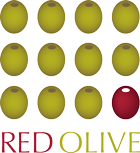The world of smoking is undergoing a fundamental shift. The rise of vaping, which even cancer charities are promoting as an alternative to traditional tobacco products, is forcing cigarette manufacturers to re-think how they do business.
When one of the big-four tobacco producers launched a subsidiary to handle its vaping business, it realised that it wasn’t only smokers’ habits that were changing. The whole market for smoking goods was shifting beneath its feet. It asked Red Olive for some insight – on both its products and its customers.
A new market
“We had some qualms about working for a tobacco manufacturer,” explains Red Olive’s Mark Fulgoni. “That changed when we learned that it wanted help moving away from tobacco. As part of that process, it had established a subsidiary, which operated entirely separately from the parent organisation.”
The spin-off, which can’t be named, worked more like a fast-moving goods supplier than its parent did, which made Red Olive a perfect fit. With considerable expertise in such markets, Red Olive understood its likely supply chain and various routes to market.
It soon became clear that the client’s agile reporting structure didn’t sync with that of its parent. The cigarette and vaping markets are fundamentally different, with the former being regulated, and the other far more open. Cigarettes can only be sold through distributors to licensed stores; not so for vaping products, which can be sold on market stalls, online, or even by subscription.
Understanding the customer
Red Olive’s client wanted a way to analyse its sales, see which tactics were working, and understand how to penetrate new markets and sales channels. For that it needed data, and the skills to extract patterns from it on which it could base decisions.
“The sales data differed by channel,” Mark explains. “They had no clear idea who was buying their products through the supermarkets, and only a few hints from the high street vaping stores. Where they were selling online, though, they were transacting directly with specific people, so they knew exactly who they were and what they were buying.”
Red Olive needed a way to compare these diverse channels to see how they performed both against each other and across different countries.
He adds: “They ran the subsidiary in country-based business units, so geography was very interesting to them. The parent organisation already had systems in place to deal with this but wasn’t interested in breaking the countries down into individual channel, as it only had one in each case: most often a single distributor, which sent the cigarettes to the ultimate points of sale. Not so for the vaping business, which needed to handle three channels, and thousands of outlets in each.”
An information infrastructure
Having gained a firm understanding of the business, Red Olive set about constructing a data warehouse to gather the metrics that underpinned its complex sales model.
“When we started to dig into its revenue, we got information about net sales, gross sales, various discounts, promotions and advertising costs,” says Mark. “Each country potentially has a different formula for how these are calculated, so we had to confirm the data before we could start applying country-specific rules to globally-defined metrics.”
Once the rules were in place, Red Olive was able to organise countries based on their sales profiles, rather than their geographical location.
“France and Italy both have single distributor models for any smoking product, including e-cigarettes, while Germany and the UK don’t,” Mark explains. “So, depending on how things look when the client examines our analysis in full, they might decide it makes sense to start treating the UK and Germany as one sales territory, even though they don’t share a border. That way, they can export any tactics that prove successful in one of those countries to the other.”
Smoking out the competition
With the data warehouse up and running, Red Olive’s client now has a sales dashboard, through which it can gain insight into its sales performance – by country and by channel. Phase two of the project, currently in the planning stages, will take the dashboard forward by integrating customer metrics from market research organisations, Nielsen (in Europe) and IRI (in the United States).
“They will be able to use that information to gauge how it is performing against its competitors,” Mark explains. “By that, they mean the other three big tobacco firms, as well as the smaller vape brands that have sprung up, particularly here in the UK.
If you need help developing business in an unfamiliar market, call Red Olive today on 01256 83 11 00 or email [email protected] to talk to Mark and his team.



